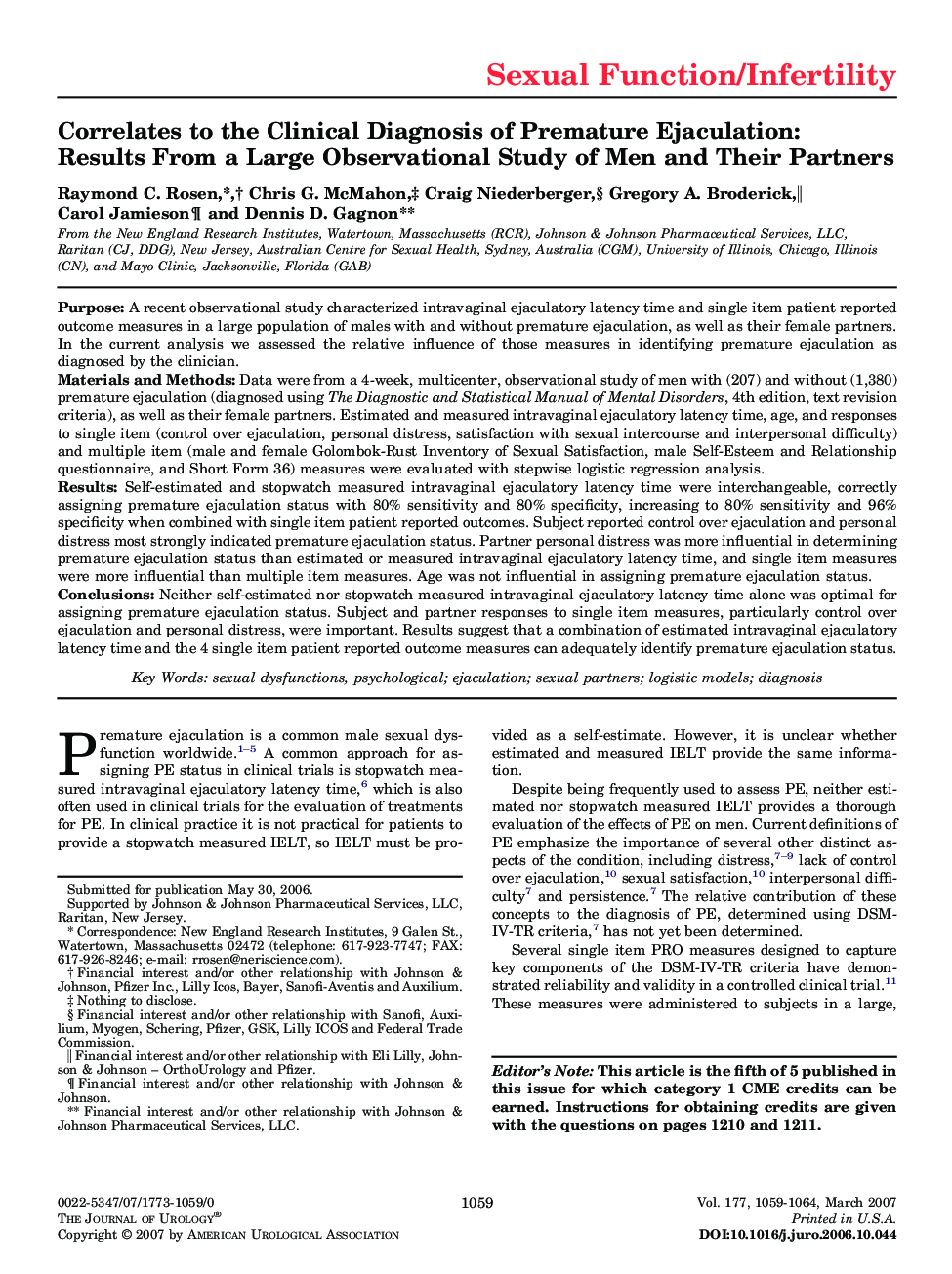| کد مقاله | کد نشریه | سال انتشار | مقاله انگلیسی | نسخه تمام متن |
|---|---|---|---|---|
| 3879001 | 1599012 | 2007 | 6 صفحه PDF | دانلود رایگان |

PurposeA recent observational study characterized intravaginal ejaculatory latency time and single item patient reported outcome measures in a large population of males with and without premature ejaculation, as well as their female partners. In the current analysis we assessed the relative influence of those measures in identifying premature ejaculation as diagnosed by the clinician.Materials and MethodsData were from a 4-week, multicenter, observational study of men with (207) and without (1,380) premature ejaculation (diagnosed using The Diagnostic and Statistical Manual of Mental Disorders, 4th edition, text revision criteria), as well as their female partners. Estimated and measured intravaginal ejaculatory latency time, age, and responses to single item (control over ejaculation, personal distress, satisfaction with sexual intercourse and interpersonal difficulty) and multiple item (male and female Golombok-Rust Inventory of Sexual Satisfaction, male Self-Esteem and Relationship questionnaire, and Short Form 36) measures were evaluated with stepwise logistic regression analysis.ResultsSelf-estimated and stopwatch measured intravaginal ejaculatory latency time were interchangeable, correctly assigning premature ejaculation status with 80% sensitivity and 80% specificity, increasing to 80% sensitivity and 96% specificity when combined with single item patient reported outcomes. Subject reported control over ejaculation and personal distress most strongly indicated premature ejaculation status. Partner personal distress was more influential in determining premature ejaculation status than estimated or measured intravaginal ejaculatory latency time, and single item measures were more influential than multiple item measures. Age was not influential in assigning premature ejaculation status.ConclusionsNeither self-estimated nor stopwatch measured intravaginal ejaculatory latency time alone was optimal for assigning premature ejaculation status. Subject and partner responses to single item measures, particularly control over ejaculation and personal distress, were important. Results suggest that a combination of estimated intravaginal ejaculatory latency time and the 4 single item patient reported outcome measures can adequately identify premature ejaculation status.
Journal: The Journal of Urology - Volume 177, Issue 3, March 2007, Pages 1059–1064